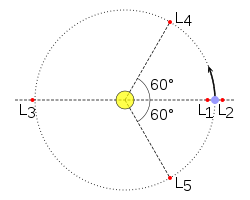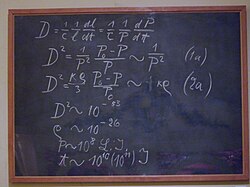
| General relativity |
|---|
 |
The following is a timeline of gravitational physics and general relativity .

| General relativity |
|---|
 |
The following is a timeline of gravitational physics and general relativity .













{{cite journal}}: ISBN / Date incompatibility (help){{cite book}}: ISBN / Date incompatibility (help)So far, the clumsily long name 'quasi-stellar radio sources' is used to describe these objects. Because the nature of these objects is entirely unknown, it is hard to prepare a short, appropriate nomenclature for them so that their essential properties are obvious from their name. For convenience, the abbreviated form 'quasar' will be used throughout this paper.
{{cite journal}}: CS1 maint: numeric names: authors list (link)